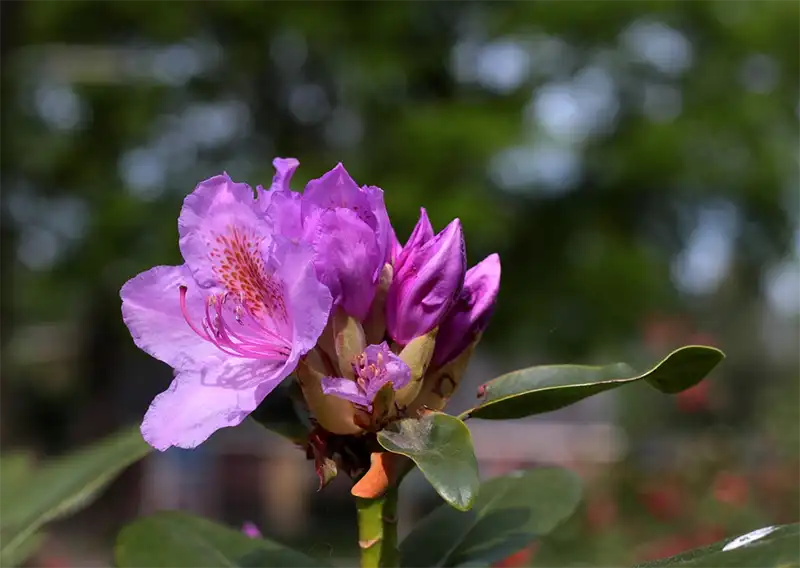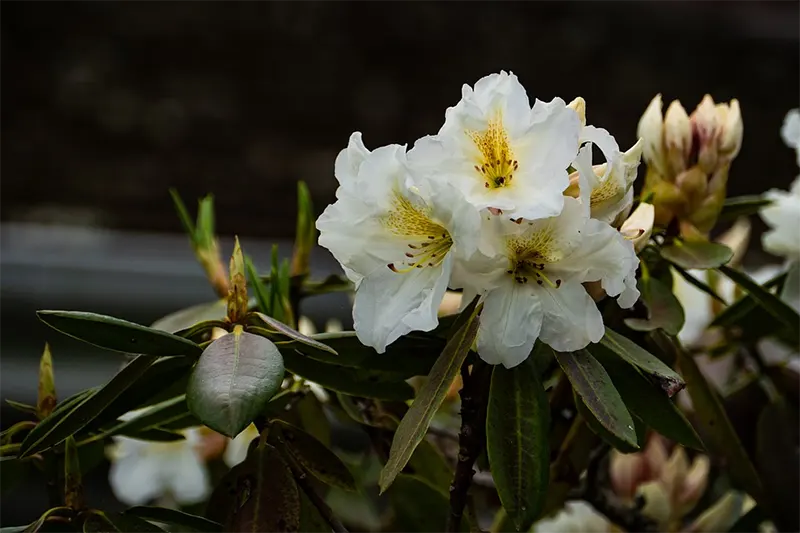How Do You Get Rid Of Azaleas Fungus?
This genus has some of the most beautiful and noticeable flowering shrubs that you’ll see. Despite being generally problematic and hardy-free, they occasionally have diseases and pests- resulting in Azalea fungus. The good news is that there are solutions for the majority of these diseases and pests.
Azalea Fungal Diseases
We all love Azaleas because they’re relatively low-maintenance, so they mostly remain healthy unless they are stressed.
Stressed as in being injured or in poor environmental conditions, then they are susceptible to fungal diseases.
Azalea Pests
Azalea Bark Scale – These pests are mainly found in the Eastern part of the United States. Bark Scale causes Azalea to be covered with what appears to be white, sooty mold. You will need to treat your Azalea by using horticultural oil. You will also need to remove and destroy the affected branches.
Azalea Caterpillars – These caterpillars have yellow and white stripes, with a base color of red, to brown-black. Due to these pests feeding in groups, they can quickly defoliate the Azalea. The caterpillars aren’t dangerous to humans, so the most effective way to get rid of them is handpicking.
Azalea Lace Bugs – The most common pest that threatens the Azalea shrub is the lace bug. You can tell that the Azalea has lace bugs when you notice the foliage looking white or yellow. You will also see a number of black bugs on the underside of the leaves. The most effective way to control the lace bugs is by using insecticidal soap.
Azalea Leafminers – These leafminers cause the leaves to have yellow and brown blisters to form between the upper and lower surfaces. The leaves tend to curl up and fall off. It will be necessary to remove the affected plants.
Stunt Nematode – These pests cause the Azalea to turn yellow and become stunted by attacking its feeder roots. The Azaleas that have become heavily infested end up dying. Currently, there is no way to control stunt nematodes. So the best thing you can do is to prevent these pests in the first place- by following proper watering and fertility practices.
Whiteflies – Whiteflies are found on the underside of the Azalea’s leaves, causing them to turn yellow or die. You can reduce whiteflies by using neem oil; however, whiteflies don’t respond well to treatment.
We have a detailed bonsai tree care guide with all the relevant information. Check the guide out here!

Azalea diseases
Azalea Gall – This disease occurs at the beginning of springtime when the Azalea has new leaf growth. Azalea Gall causes the plant’s leaves to become pale green to white, fleshy and curled. The affected leaves will turn brown eventually, and they will need to be removed and destroyed.
Petal Blight – You can tell when an Azalea is affected by this fungus as its flower appears to have rust-colored spots on white petals or pale to white spots on colored petals. The spots will eventually become watery and soft as they enlarge. You can prevent petal blight by adding a fungicide to the buds of the Azalea as they begin to turn color.
Powdery Mildew – During the fall, Azaleas are most often affected by Powdery Mildew, which causes a white powdery growth to appear on their leaves. The affected leaves may end up dropping prematurely. In this case, your go-to will have to be fungicidal spray.
Rust – You can see when Rust affects Azaleas as the infected leaves have spore masses that are reddish to orange, and their bark has cankers or galls. This may eventually cause the entire plant to die; if your Azalea is experiencing Rust, trim and dispose of the infected leaves and bark immediately.
Twig Blight – This affects the bark of the Azalea by causing a reddish-brown discoloration in one or more of the branches, resulting in the wilting and defoliation of the branches.
Root and Crown Rots, also known as Water Molds – The base of the Azalea is attacked by this, which often results in the plant being killed. The type of fungi which attacks the Azalea in this way is called the Pythium and Phytophthora fungi- they both grow in the presence of overeating or soil that’s poorly drained. Azaleas need to be grown in moist soil, but they also can’t tolerate their roots being waterlogged.
Prevent this by loosening the soil thoroughly. If you notice that the soil is already affected, add methyl bromide soil drench to handle the water molds. However, if the leaves begin to yellow and drop, the use of chemicals will be ineffective.
How To Remedy Azalea Fungus Issues
There are solutions to the irritating problem of your Azaleas suffering from fungal issues. Use the following tips below to save your Azalea:
Insecticide
If pests are the problem, the treatment is the same- even though the Azalea has different borers. When it’s early spring to late summer, cut back your Azalea’s affected branches. If you notice insects on the leaves, take horticultural oil or insecticidal soap to spray the undersides of the leaves. Prevent injuring your Azalea by following the proper instructions.
Fungal diseases
If the problem is fungal diseases, it will be a complex treatment- but not impossible. However, some fungal diseases end up fatal as they can’t be treated at all.
If the branches of your Azalea are suffering from Phytophthora, you will need to dispose of and obliterate the Azalea to avoid the disease from spreading. The disease lives in the soil, so avoid replacing or planting new plants where the Azalea was.
If your Azaleas have Botryosphaeria, you can prune out the affected branches to treat your Azaela. You can avoid experiencing the disease every year by removing your Azalea from the soil temporarily. You will then have to mulch and care for the quality of your soil. Prevent future reinfection by removing all the dropped plant material from below the plants, as the fungal spores remain on the leaves, twigs, and branches.
Wrapping it up
In conclusion, the Azalea is drought-resistant, beautiful, and hardy- which is no surprise why they make a great addition to every home. It can be frustrating when your Azalea experiences fungal issues, as they have been bred to be disease-free.
It’s normal for the Azalea to experience fungal issues occasionally, so don’t be too hard on yourself. Many remedies can be used for your Azalea, depending on the type of fungal issue.
Hopefully, the information above will help you in your Azalea journey. Check your Azalea out regularly for signs of fungal issues, and make use of our suggestions to remedy your Azalea.







